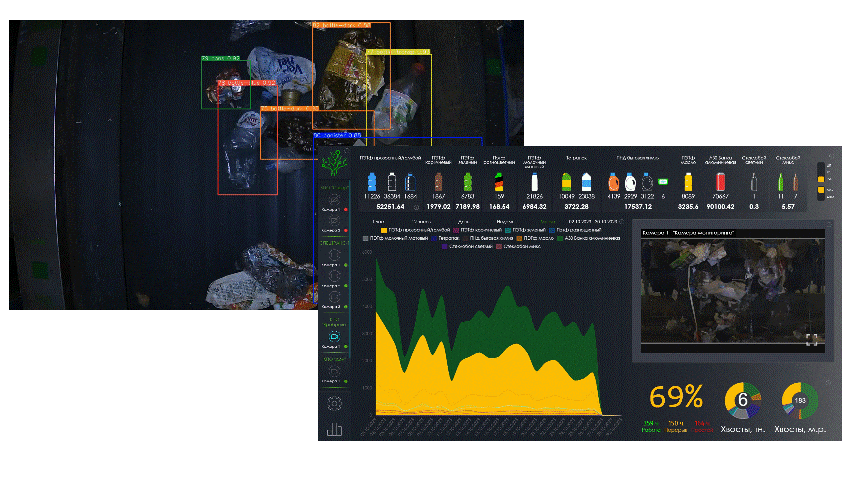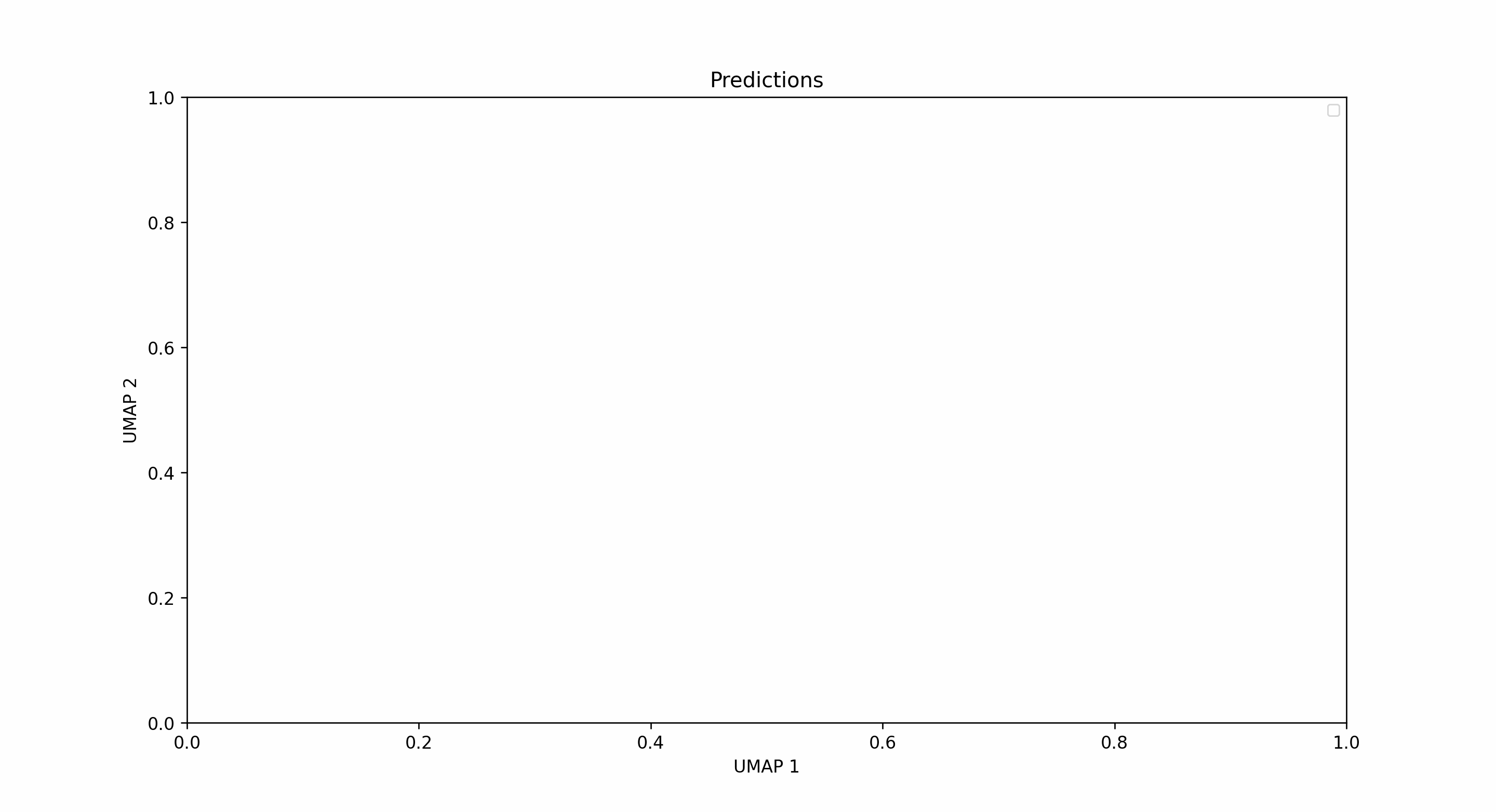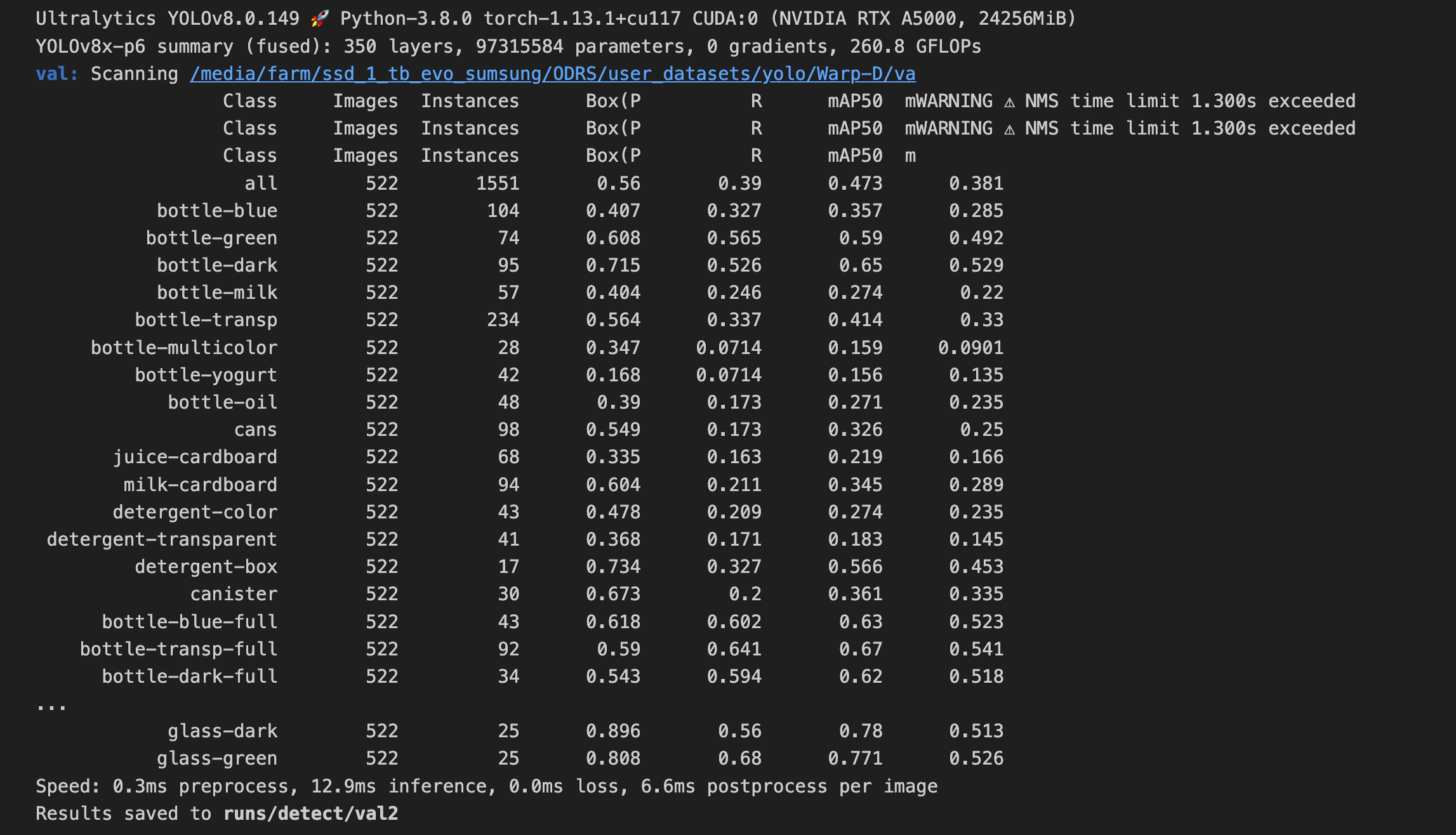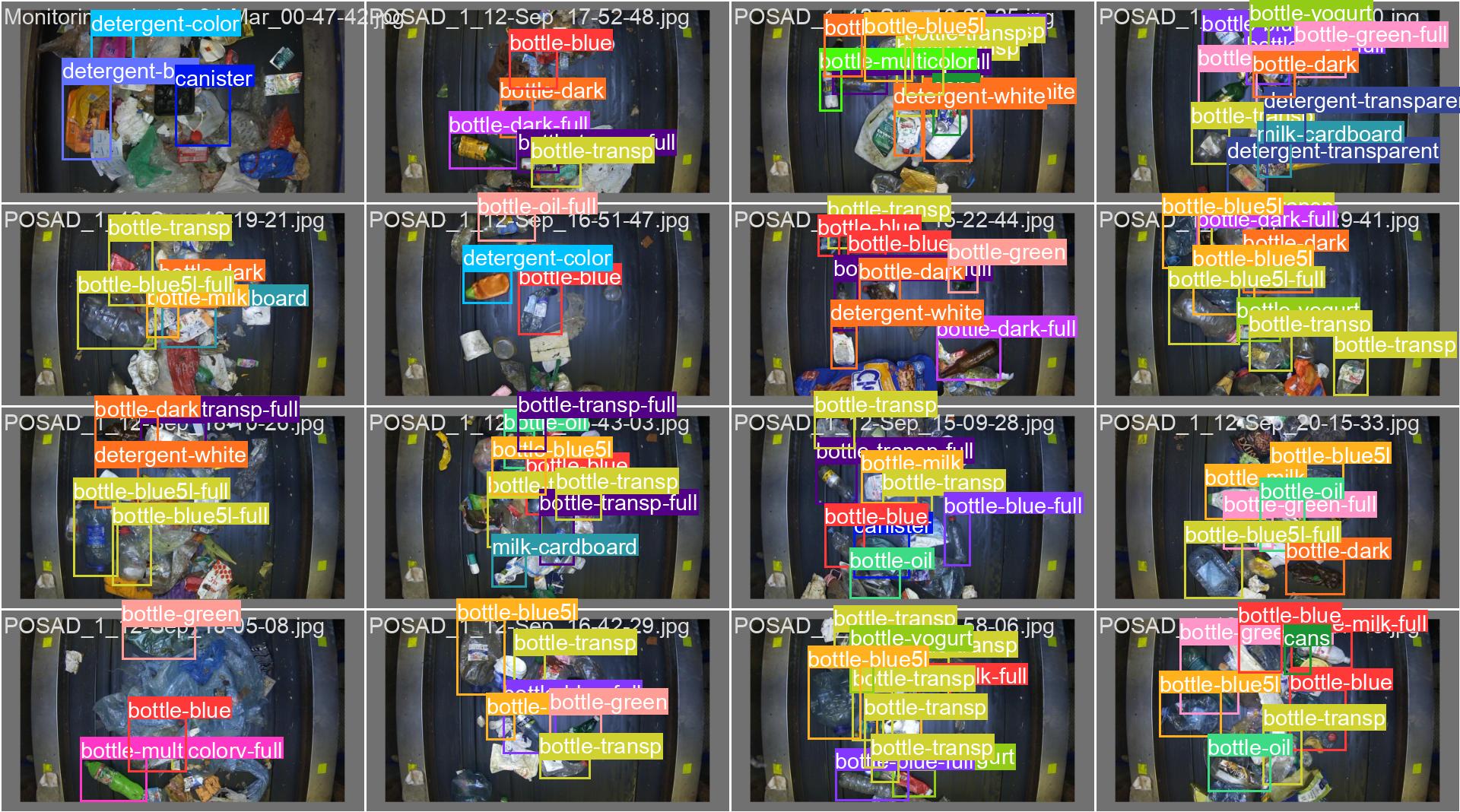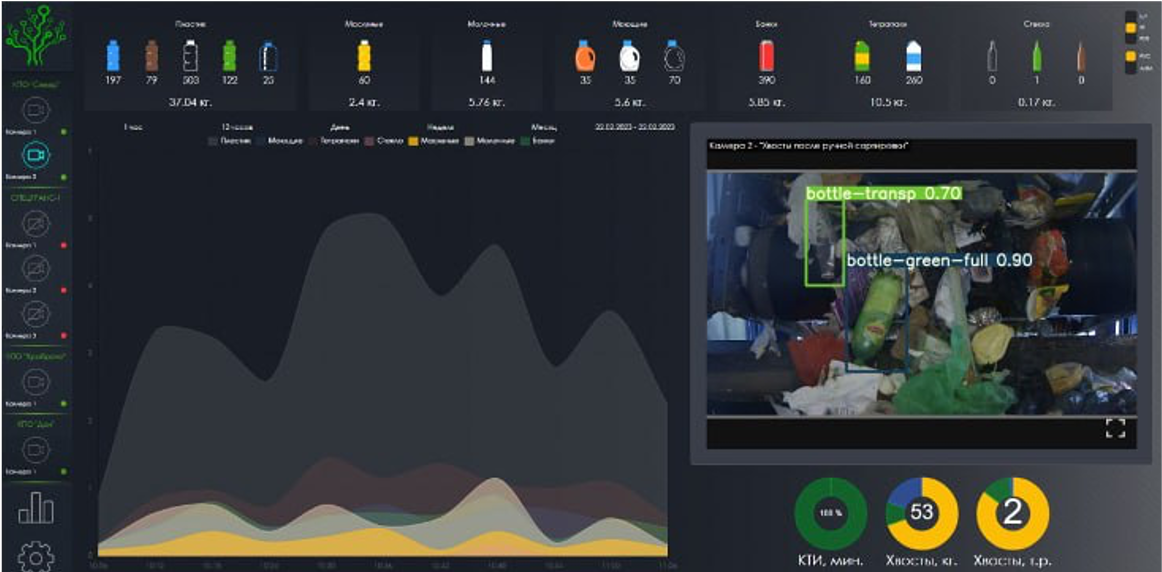ODRS - it an open source recommendation system for training object detection models. Our system allows you to choose the most profitable existing object recognition models based on user preferences and data. In addition to choosing the architecture of the model, the system will help you start training and configure the environment.
The proposed recommendation system consists of several components that interact to generate recommendations for machine learning pipelines.
The principle of operation is to find the most similar set of images in the knowledge base
- Installation
- Dataset structure
- ML Recommendation system
- Detectors Training
- Using the API
- Publications About ODRS and Kaggle example
- Contacts
Download repository and install the necessary dependencies using the following commands:
git clone https://github.com/saaresearch/ODRS.git
cd ODRS/
pip install -r requirements.txt To use the recommendation system or train the desired detector, put your dataset in yolo format in the user_datasets/ directory. The set can have the following structures:
user_datasets
|_ _ <folder_name_your_dataset>
|_ _train
|_ _images
|_ <name_1>.jpg
|_ ...
|_ <name_N>.jpg
|_ _labels
|_ <name_1>.txt
|_ ...
|_ <name_N>.txt
|_ _valid
|_ _images
|_ <name_1>.jpg
|_ ...
|_ <name_N>.jpg
|_ _labels
|_ <name_1>.txt
|_ ...
|_ <name_N>.txt
|_ _test
|_ _images
|_ <name_1>.jpg
|_ ...
|_ <name_N>.jpg
|_ _labels
|_ <name_1>.txt
|_ ...
|_ <name_N>.txt
or you can use the following structure, then your set will be automatically divided into samples:
user_datasets
|_ _ <folder_name_your_dataset>
|_ <name_1>.jpg
|_ ...
|_ <name_N>.jpg
|_ ...
|_ <name_1>.txt
|_ ...
|_ <name_N>.txt
Add to the root directory of the project .txt a file containing the names of all classes in your set of images.
Example classes.txt:
boat
car
dock
jetski
liftAfter you have placed your dataset in the folder user_datasets/ and created in the root directory .txt a file containing the names of all classes in your set of images. You can start working with the main functionality of the project.
- In order to use the recommendation system, you need to configure ml_config.yaml. Go to the desired directory:
cd src/ML/config/
- Open ml_config.yaml and set the necessary parameters and paths:
#dataset_path: path to data folder or name dataset folder in user_dataset #classes_path: path to classes.txt or name classes.txt in root directory #GPU: True/False - "Inference mode" #speed: True/False - "Search for models with a focus on speed" #accuracy: True/False - "Search for models with a focus on accuracy" #balance: True/False - "Search for models with a focus on the balance between speed and accuracy" classes_path: classes.txt dataset_path: /home/runner/work/ODRS/ODRS/user_datasets/WaRP/Warp-D GPU: False accuracy: False speed: False balance: True
- Go to the script run_recommender.py and start it:
cd .. python run_recommender.py
- If everything worked successfully, you will see something like the following answer:
Top models for training: 1) yolov7 2) yolov8x6 3) yolov7x
-
Go to the directory containing train_config.yaml in which the training parameters are specified.
cd ODRS/src/DL/config
-
Setting up training parameters:
# Name *.txt file with names classes CLASSES: classes.txt # This file generated automaticaly CONFIG_PATH: dataset.yaml # Path to data DATA_PATH: /media/farm/ssd_1_tb_evo_sumsung/ODRS/user_datasets/yolo/plant EPOCHS: 2 IMG_SIZE: 300 BATCH_SIZE: 16 # MODEL ZOO: # ["yolov5l", "yolov5m", "yolov5n", "yolov5s", "yolov5x", # "yolov7x", "yolov7", "yolov7-tiny", #"yolov8x6", "yolov8x", # "yolov8s", "yolov8n", "yolov8m", "faster-rcnn", "ssd"] # **NOTE**: For successful training of the ssd model, # the size of your images should not exceed 512x512 # You can also use this format if need to train few models # MODEL: ['yolov5s', 'yolov5l'] this can also be applied to parameters EPOCHS, BATCH_SIZE, IMG_SIZE MODEL: ssd # For multiprocessing. # For CPU: # GPU_COUNT: 0 # SELECT_GPU: cpu GPU_COUNT: 2 SELECT_GPU: 0,1 # parameters for autosplit dataset SPLIT_TRAIN_VALUE: 0.6 SPLIT_VAL_VALUE: 0.35
-
Starting training: NOTE: If, for example, you specified in train_config.yaml, the path to the yolov5 model, and you want to start yolov8, training will not start.
cd .. python train_detectors.py
-
After the training, you will see in the root directory ODRS a new directory runs, all the results of experiments will be saved in it. For convenience, the result of each experiment is saved in a separate folder in the following form:
<year>-<mounth>-<day>_<hours>-<minutes>-<seconds>_<model_name> |_ _exp |_...
To use the project in your code, you can use the built-in Api. You can see full examples of using the API here: Example API.
- Initializing a task:
from ODRS.src.api.ODRS import ODRS
#init object with parameters
odrs = ODRS(job="object_detection", data_path='full_data_path', classes="classes.txt", img_size = 300,
batch_size = 20, epochs = 1, model = 'yolov8n', split_train_value = 0.85, split_val_value = 0.1,
gpu_count = 1, select_gpu = 0)- Starting training:
odrs.fit()- Getting results:
!yolo val detect data=path_to_data device=0 model=ODRS/runs/path_to_experiment/best.pt- Example results:
This project is actively used in testing new models and datasets in Insystem for classification and detection of garbage.
In Russian:
In English:




